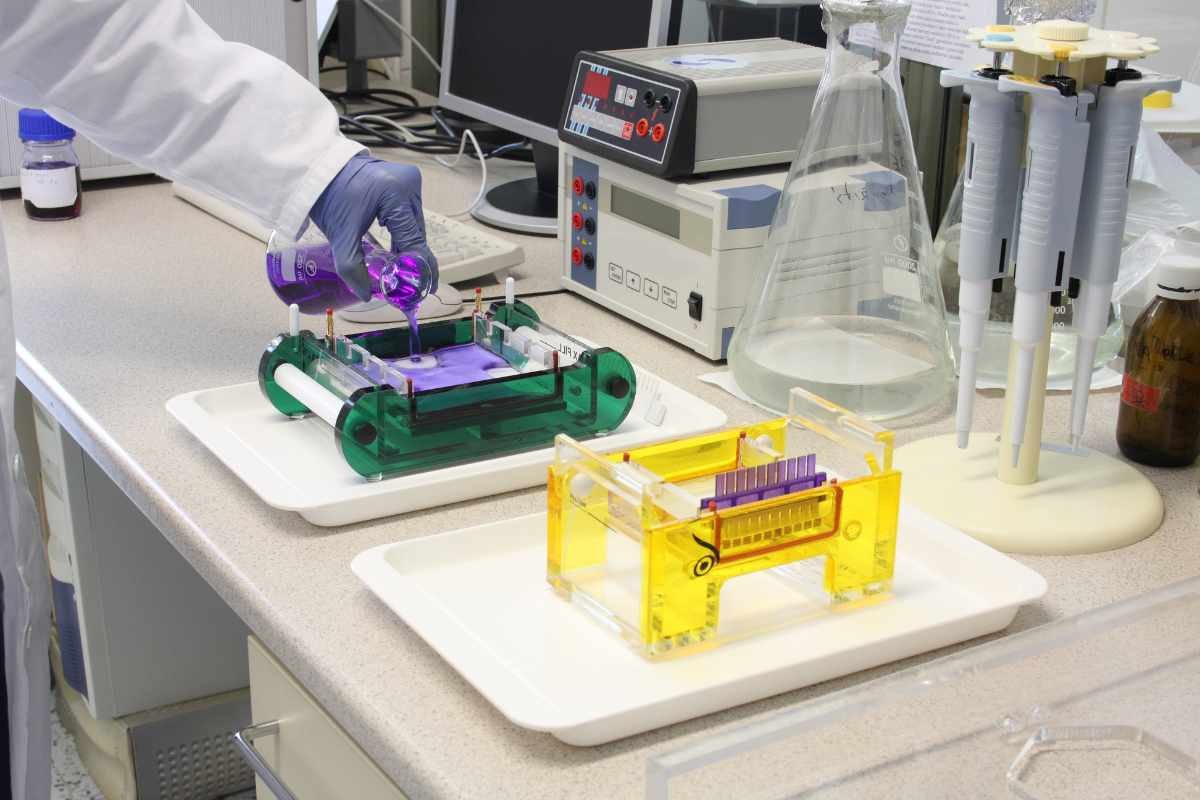How do doctors diagnose those issues such as kidney diseases or multiple myeloma just by studying the proteins in your blood or urine?
The answer lies in the electrophoresis protein test. This is an intricate but uncomplicated examination that breaks down proteins so that vital information concerning your health can be revealed.
In this article, we look at what this test consists of, its significance and how it could affect your journey through life concerning health:
What Is an Electrophoresis Protein Test?
The electrophoresis protein test is designed to evaluate the types and amounts of proteins in your blood or urine. Proteins are crucial for numerous bodily functions, and their levels can reveal a lot about your health. This test uses an electric current to separate proteins based on their size and charge, creating a distinct pattern that can help diagnose various conditions. By understanding these patterns, healthcare professionals can gain insights into underlying health issues.
How Does the Electrophoresis Protein Test Work?
During the electrophoresis protein test, a sample of blood or urine is subjected to an electric field in a laboratory setting. Proteins in the sample migrate at different rates depending on their size and charge, forming distinct bands on the test medium. These bands are then analyzed to determine the types and quantities of proteins present. This detailed analysis helps in diagnosing conditions by highlighting any abnormal protein patterns.
Types of Electrophoresis Protein Tests
There are two primary types of electrophoresis protein tests:
- Serum Protein Electrophoresis (SPEP): This test focuses on the proteins found in blood serum, particularly helpful for diagnosing blood disorders like multiple myeloma or chronic inflammation. It separates proteins into categories like albumin and globulins, each of which has a specific function in the body.
- Urine Protein Electrophoresis (UPEP): This test examines proteins in the urine, useful for detecting kidney-related issues. It helps identify abnormal protein levels, which can indicate kidney damage or disease.

Importance of the Electrophoresis Protein Test
This test plays a crucial role in diagnosing and managing various medical conditions. Here’s why it matters:
- Detecting Blood Disorders: It can identify abnormal proteins associated with conditions like multiple myeloma.
- Monitoring Kidney Health: By analyzing urine proteins, the test helps in diagnosing and tracking kidney diseases.
- Identifying Immune System Issues: The test can reveal abnormal proteins linked to autoimmune diseases and chronic inflammation.
- Cancer Detection: Abnormal protein patterns may indicate the presence of certain cancers, aiding in early diagnosis.
Conditions Diagnosed by the Electrophoresis Protein Test
This protein test can help diagnose a range of conditions:
- Multiple Myeloma:
This cancer affects plasma cells in the blood. The test can detect abnormal proteins, known as monoclonal proteins, that signal the presence of this disease. - Chronic Inflammation:
Elevated protein levels can indicate persistent inflammation, and the test helps pinpoint the cause. - Nephrotic Syndrome:
This kidney disorder results in excessive protein loss in urine. The test helps diagnose and monitor this condition. - Liver Diseases:
Changes in protein levels can signal liver dysfunction, aiding in the diagnosis of conditions like cirrhosis or hepatitis. - Autoimmune Diseases:
The test can detect abnormal proteins linked to autoimmune conditions like lupus, providing essential diagnostic information.
What to Expect During the Test?
Undergoing the electrophoresis protein test is generally simple. Here’s a step-by-step look at what happens:

- Sample Collection:
For serum protein electrophoresis, a blood sample is drawn, usually from your arm. For urine protein electrophoresis, you’ll need to collect a 24-hour urine sample. - Laboratory Analysis:
The sample is processed in a lab where proteins are separated using an electric field. This creates a pattern that is analyzed for any abnormalities. - Result Interpretation:
Results are presented as a graph or chart showing the different protein types. Your doctor will explain what these results mean and how they relate to your health. - Follow-Up:
Based on the results, further testing may be needed to confirm a diagnosis or explore any detected abnormalities in more detail.
Risks and Considerations
This test is low-risk, but there are a few things to keep in mind:
- Blood Draw Risks: Minor discomfort, bruising, or dizziness may occur from the blood draw.
- Sample Accuracy: Proper collection of urine samples is crucial for accurate results.
- Medication Effects: Inform your healthcare provider about any medications you’re taking, as they can influence the results.
Understanding Your Results
Interpreting the results of an electrophoresis protein test involves examining the patterns of protein bands. Here’s a quick guide to what you might see:
- Albumin: This protein is vital for maintaining blood volume and pressure.
- Alpha-1 and Alpha-2 Globulins: These proteins play roles in the immune response and inflammation control.
- Beta Globulins: Involved in lipid transport and immune function.
- Gamma Globulins: Composed mainly of antibodies, crucial for immune defense.
Abnormalities in these patterns can indicate various health issues that your doctor will need to address.
Preparing for the Test
Preparing for the electrophoresis protein test is straightforward. Here’s what you need to know:
- Fasting: You might be asked to fast before a blood sample is taken.
- Medication Disclosure: Be sure to inform your doctor about any medications or supplements you’re using.

Conclusion
An important diagnostic tool for identifying various diseases is the electrophoresis protein test which provides in-depth information about an individual’s health status through an analysis of protein patterns in their body fluids such as blood or urine. Understanding how it works and what it reveals can help people control their own health effectively together with their doctors. Preparing oneself for this examination by understanding what to expect from its outcomes will help patients confidently engage with their physicians.







